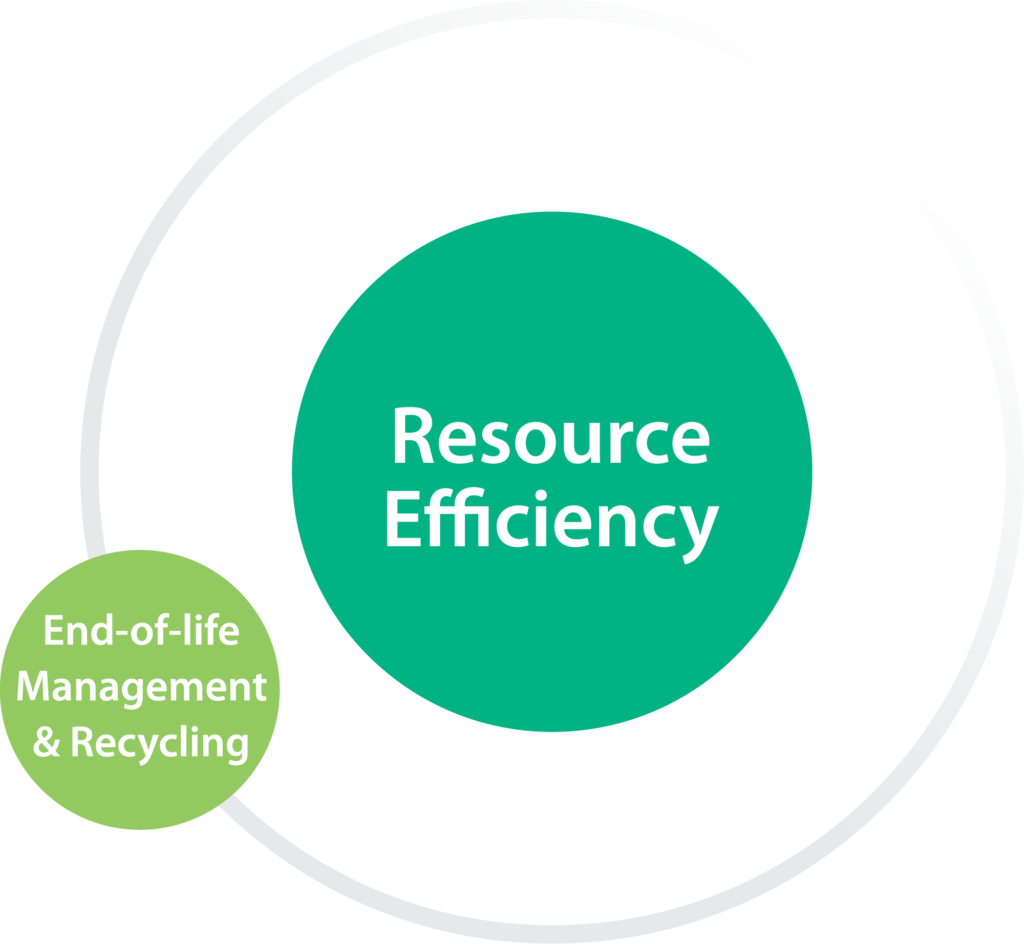
Resource Efficiency & Recycling
Resource Efficiency may be an unfamiliar term, but it most appropriately describes the objective in the management of vinyl materials at all stages of their life cycle – from design through vinyl recycling. An efficient use of resources reduces the quantity of inputs needed to produce a unit of output, often referred to as doing more with less. Less material input reduces the demand on resources and the amount of production by-products including waste and greenhouse gases per unit of product.
This impact category is focused on two priority areas:
-
- Scrap management
- Recycling
The Vinyl Recycling Landscape Today
More than 1.1 billion pounds of vinyl — 87% pre-consumer vinyl materials and 13% post-consumer vinyl materials — was recycled in the U.S. and Canada in 2019 according to research conducted by the Tarnell Company.
Since 2016, overall vinyl recycling has increased 7%. The majority of this increase is attributed to pre-consumer recycling; the percentage of post-consumer recycled material has remained flat during the same time period.
Recycling Pre-consumer vs. Post-consumer Materials
Pre-consumer vinyl scrap generated at vinyl production plants is recycled back into the production process at very high levels. This material is readily available, requiring minimum transportation logistics, and is a valuable raw material, offsetting the use of virgin materials.
Post-consumer recycling on the other hand has the additional burden and complexities of material collection, sorting and cleaning, and costs of labor and transportation. These hurdles have proven stubbornly difficult to overcome without a coordinated industry response.
Our Plan for the Next 5 Years
Industry Goal: Increase post-consumer recycling to 160 million pounds by 2025
Given the need to increase post-consumer vinyl recycling, the resource efficiency task force, referred to as V-cycle, set a goal that would focus the industry on this objective To accomplish this, the task force has developed a strategy that includes driving technology innovation, increasing infrastructure investments, informing recyclers and product producers, and celebrating success stories.
Two pilot recycling projects, one in vinyl roofing and the other in vinyl siding, were initiated in collaboration with the Vinyl Roofing Division of the Chemical Fabrics and Films Association and the Vinyl Siding Institute. The purpose of these projects is to demonstrate the feasibility of an industry recycling initiative in a limited scope and to identify the roadmap to scaling programs on a national scale.
Additionally, the Vinyl Institute launched the formation of VIABILITY, an industry-wide PVC recycling grant program aimed at accelerating post-consumer vinyl recycling. VIABILITY offers grants to organizations – up to $500,000 – in support of their post-consumer PVC recycling initiatives.
Developing a Medical PVC Recycling Pilot
Seeking Participants for a U.S. medical PVC Recycling Pilot Program
The Vinyl Sustainability Council is seeking participants for a U.S. medical PVC recycling pilot program. The pilot initiative aims to divert products from landfills and encourage the recycling of non-hazardous medical PVC devices in hospitals. The VSC is looking to collect IV bags, oxygen masks, and oxygen tubing waste to be remanufactured into new products.
